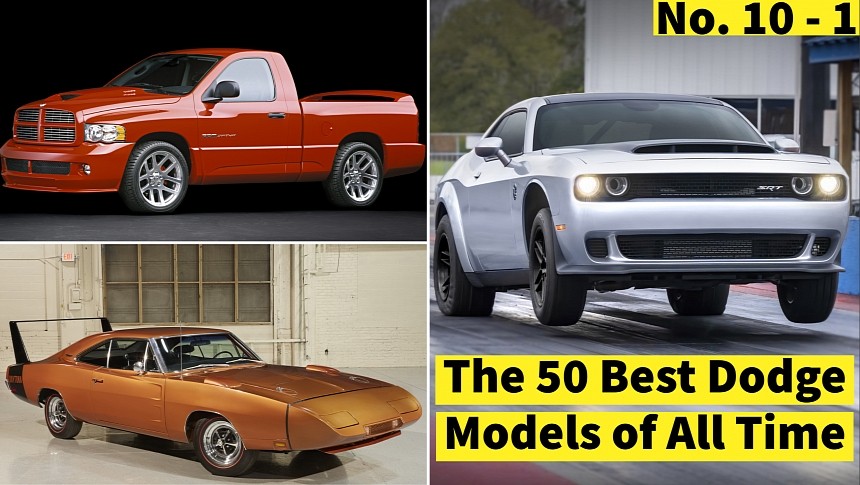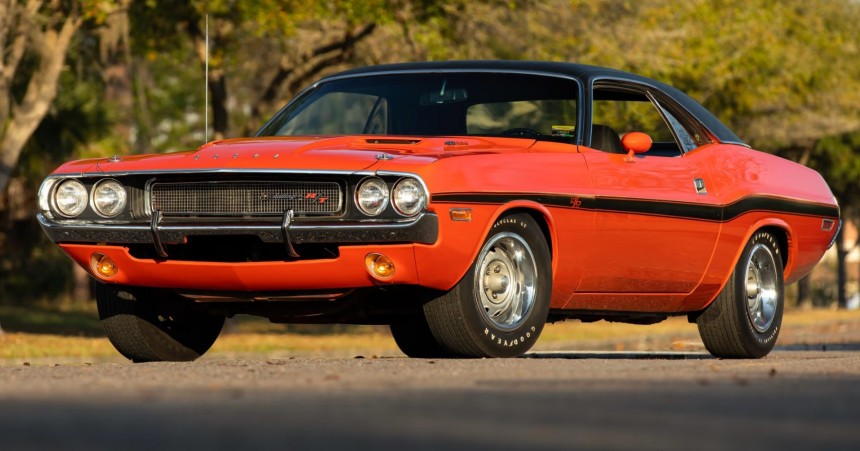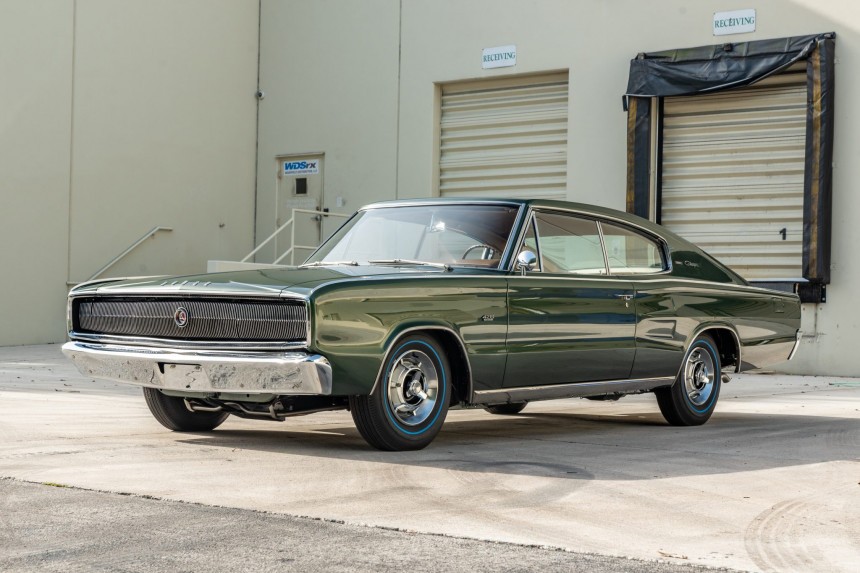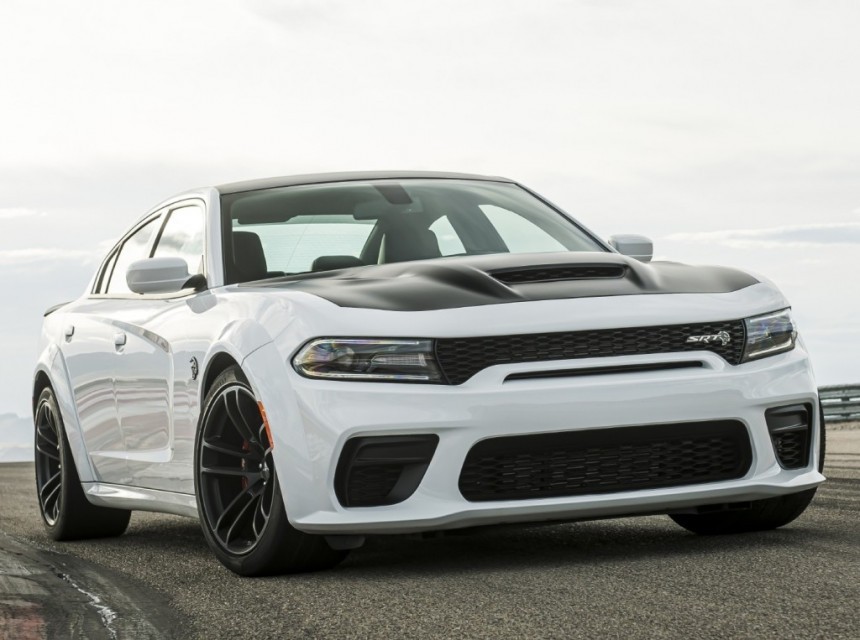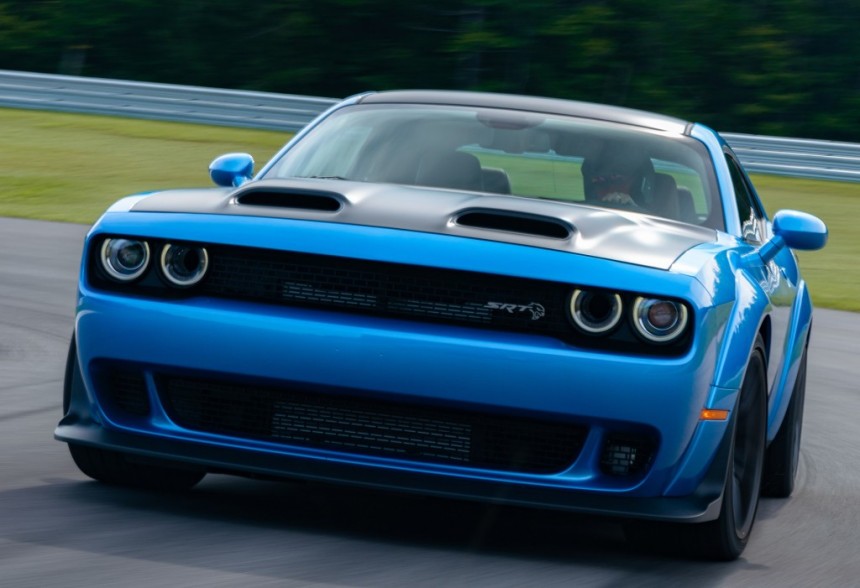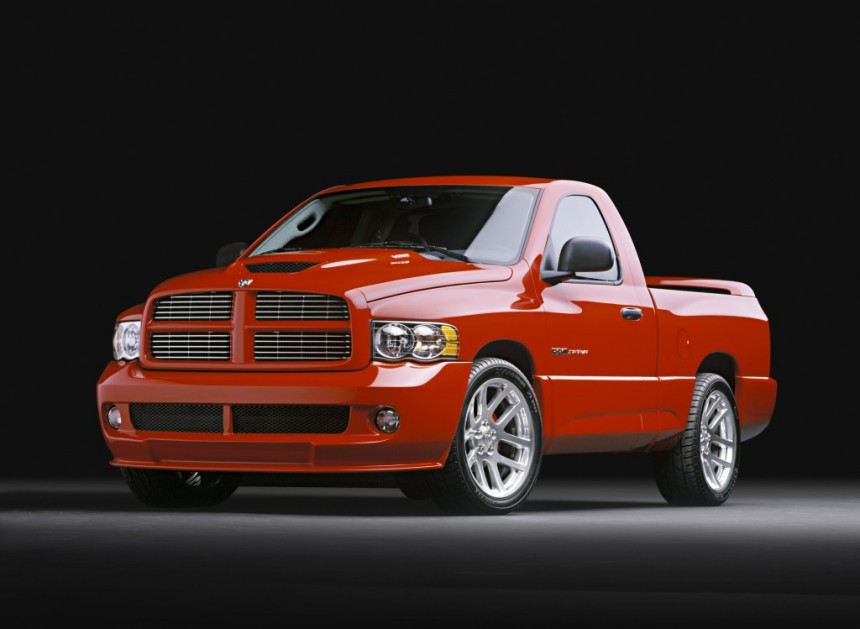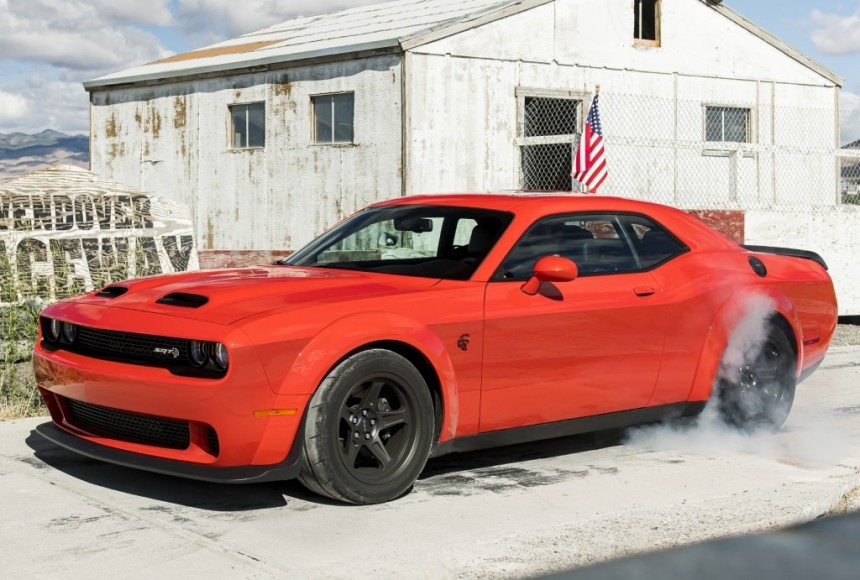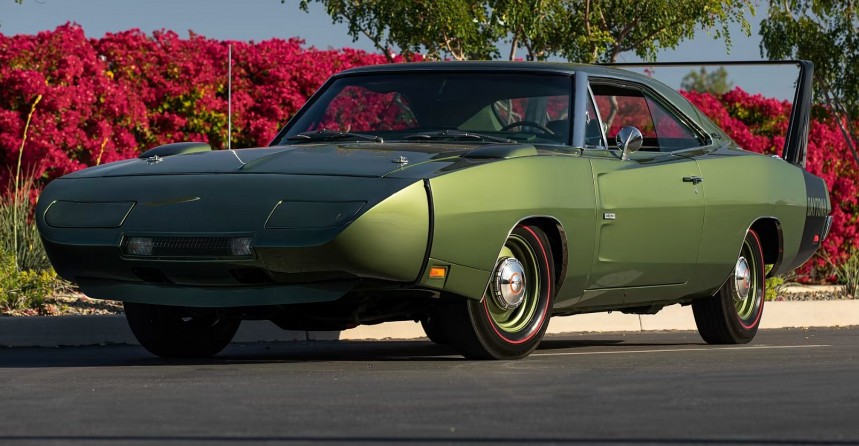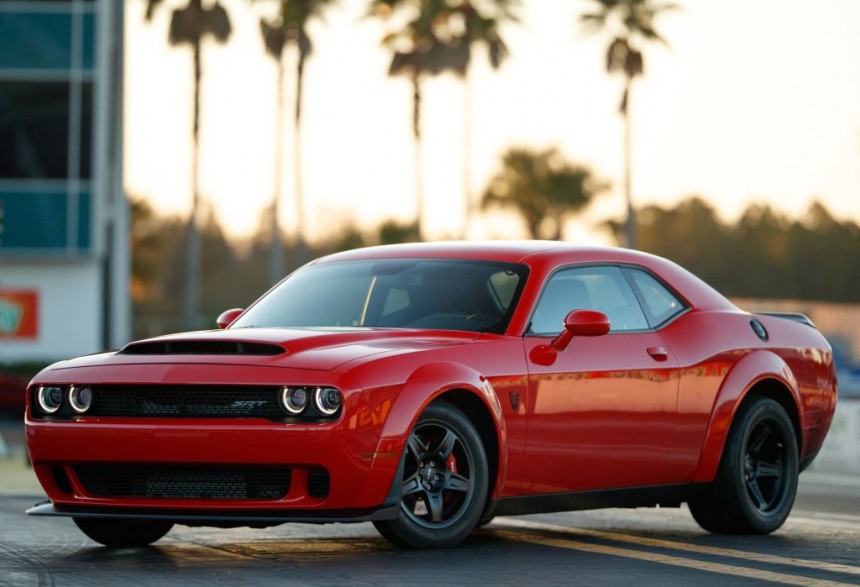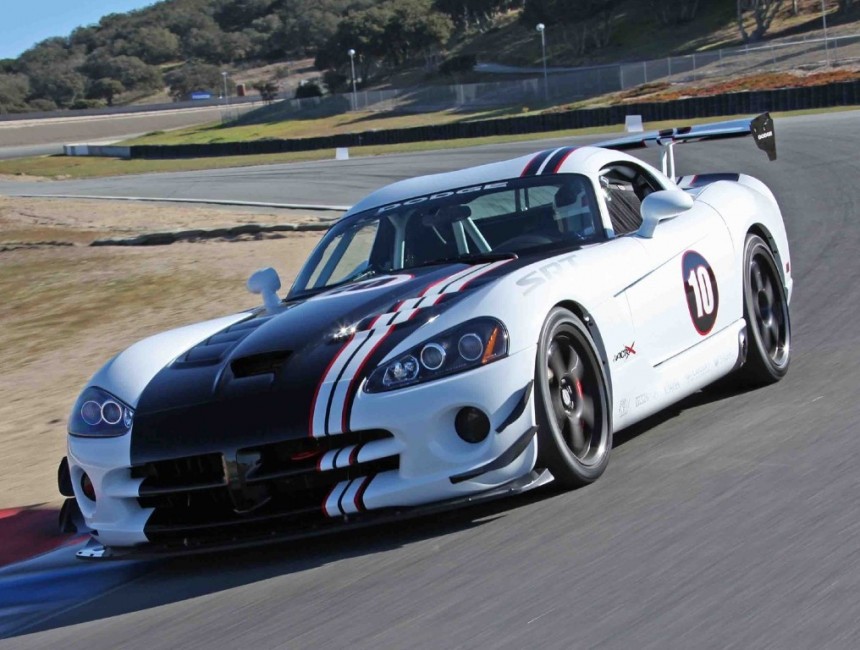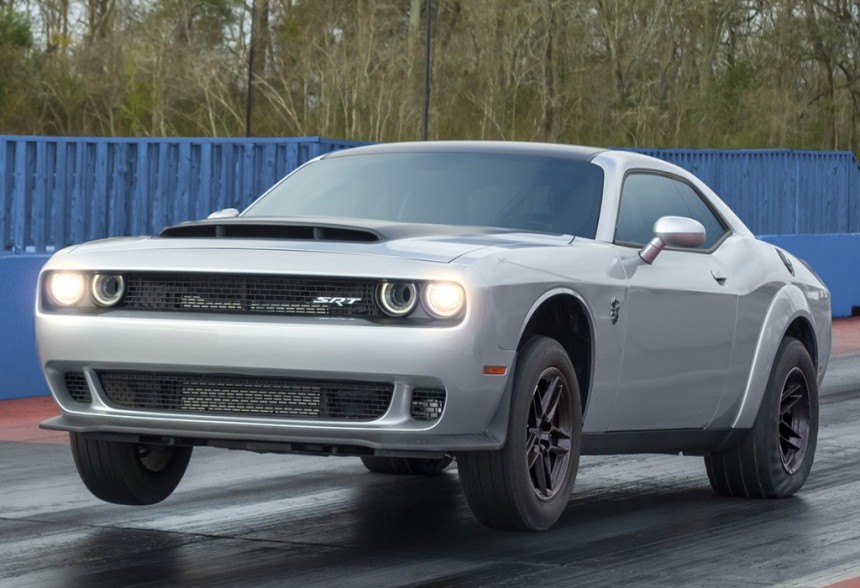Founded in 1900 as the Dodge Brothers Company, Dodge became a Chrysler division in 1928. Initially designated as a mid-priced brand above Plymouth, Dodge became a big player in the muscle car market in the 1960s.
The company is also famous for its long-running line of D-Series trucks (which eventually led to the creation of the Ram division) and is credited with having kickstarted the minivan craze with the Caravan in the 1980s. It also gave us the 426-cubic-inch HEMI, one of the greatest V8 engines ever. At the same time, its modern Dodge Challenger spawned the most powerful factory muscle car in history.
But these are only a handful of outstanding products from Dodge's assembly line. To celebrate one of Detroit's most significant automakers, we made a list of the 50 best Dodge models of all time. Having already discussed numbers 50 to 11, here's the final part, which includes the ten best Dodge cars ever made.
While most iconic muscle car nameplates from the golden era were born in the mid-1960s, Dodge did not unleash the Challenger until the 1970 model year. And due to the arrival of the 1973 oil crisis and strict emissions regulations, the car was discontinued in 1974. So the initial Challenger spent only four model years on the market. Moreover, it was stripped of its main performance V8 engines after 1971.
But even so, the Challenger greatly impacted the market and quickly morphed into a legendary rig. One that returned in the modern era and spawned class-leading muscle cars like the Hellcat and the Demon. The first-gen Challenger wasn't as powerful and fast, but the optional 426 HEMI V8 turned into one of the most appealing muscle cars of its era. Not only that, but it's a desirable and expensive classic nowadays.
And that's also because the 425-horsepower mill is a rare bird in the Challenger. The car was quite popular in its first year on the market, moving almost 77,000 units, but high insurance rates kept many customers away from the HEMI engine. Only 356 cars left the factory with the powerplant, accounting for less than 0.5% of total production. The figure also includes 60 units equipped with the SE package and only nine convertibles. Talk about rare, right?
Of course, we can't talk about the first-year Challenger HEMI and ignore the car that started it all. Yes, the Charger is the first nameplate that got the road-spec 426 HEMI, which became available in mid-1966. At the time, the Charger wasn't a full-blown muscle car as much as a four-seat fastback with luxurious appointments. And that's precisely what makes the early Charger cool.
Much like the Challenger, the Charger was available with a selection of V8 engines at the time. But while the mild 318- and 361-cubic-inch (5.2- and 5.9-liter) units kept it in fastback cruiser territory, the 426 HEMI turned it into a 425-horsepower sleeper that ran the quarter-mile in less than 15 seconds.
And like any HEMI-powered Mopar, the 426-equipped Charger is very rare. Specifically, Dodge sold only 468 units in 1966 (out of 37,344 cars in total), 250 fitted with the four-speed manual and 218 with the automatic gearbox. Both are six-figure gems that draw a lot of attention at public auctions.
Unlike the Challenger, the modern Charger did not get the drag-ready Demon treatment. Not exactly surprising due to its four-door layout, I guess. But the full-size sedan did get a Hellcat version with 707 horsepower in 2015.
In 2021, Dodge took things up a notch with the SRT Hellcat Redeye. Powered by a detuned version of the Demon engine, the Redeye came with 797 horsepower and 707 pound-feet (959 Nm) of torque on tap. And it became the most potent gasoline-powered sedan ever produced.
Of course, it was also the fastest, needing only 3.5 seconds to hit 60 mph (97 kph) from a standing start. The quarter-mile sprint takes an incredible 10.6 seconds, while top speed stands proud at 203 mph (327 kph). With no Super Stock or Demon version in sight, the Hellcat Redeye will probably go into the history books as the most potent gas-fed version of the nameplate.
The modern Dodge Challenger was offered with high-performance V8 engines since day one, but things got more serious in 2015. That's when Chrysler debuted the 6.2-liter Hellcat engine. Rated at 707 horsepower, the Challenger became the most powerful production muscle car in history. But Dodge didn't stop there.
In 2019, it updated the Hellcat to 717 horsepower. Moreover, it created the Hellcat Redeye, which got an even beefier supercharged V8 rated at 797 horsepower and 707 pound-feet of torque. Essentially a detuned version of the Challenger Demon's engine, the Redeye needed only 10.8 seconds to cover the quarter-mile.
The Redeye package also propelled the Challenger toward a top speed of 203 mph (327 kph), the first iteration of the nameplate to surpass the magical 200 mph (322 kph) mark. Dodge offers both regular and widebody versions of the muscle car as of 2023.
Dodge built several cool high-performance versions of the Ram before the truck brand became a separate entity. Examples include the Lil' Red Express, the Rumble Bee, the Daytona, and the Power Wagon. But none are as extreme as the SRT-10, which got a Viper V10 engine stuffed under its hood.
Developed by engineers that worked on both the Dodge Viper and the Plymouth Prower, the SRT-10 hit showrooms with the 8.3-liter V10 used in the third-generation sports car. Rated at 500 horsepower and 525 pound-feet (712 Nm) of torque, the single-cab pickup hit 60 mph in 4.9 seconds, toward a top speed of 154 mph (248 kph). Dodge also offered a quad-cab version that was a bit slower.
But the Ram SRT-10 was more than just a regular truck with a Viper engine. It also featured a unique suspension setup, a sporty front end with a wide power bulge, and heavily bolstered, racing-derived seats. The truck remained in production for three years and moved 10,143 units.
Having already increased the output of the Challenger Hellcat with the Redeye package in 2019, Dodge took things up yet another notch with the Super Stock version in 2020. Using revised engine calibration and an increased redline (to 6,400 rpm), Dodge squeezed 807 horsepower from the supercharged, 6.2-liter HEMI V8. Exactly ten horses more than the Redeye.
Designed to slot between the Hellcat Redeye and the Demon, the Super Stock also got the latter's lightweight wheels with drag radial tires, a shorter final-drive ratio, and a drag-spec suspension with adaptive dampers.
While not quite as powerful and quick as the SRT Demon, the Super Stock needed 3.25 seconds to hit 60 mph from a standing and 10.5 seconds to cover the quarter-mile — impressive figures for a car priced under $90,000.
We haven't reached No. 1 just yet, but the Charger Daytona is the highest-placing classic Dodge on this list. Why? Well, I think it has it all. It's a homologation special based on a race car, it looks downright radical even today, it's a rare gem, and the HEMI version is a million-dollar classic.
Created after Dodge failed to defeat Ford in the 1968 NASCAR championship with the Charger 500, the Daytona was the first aero car fielded on oval tracks. Fitted with a nose cone and a massive wing atop the deck lid, the Daytona also featured a flush rear window and unique front fenders with top-mounted scoops.
The road-spec Daytona was unleashed with Chrysler's most powerful engines at the time. The 440-cubic-inch (7.2-liter) Magnum V8 came standard, while the 426-cubic-inch (7.0-liter) HEMI V8 was available through the options list. Dodge built 503 Daytonas, and only 70 of them left the factory with the HEMI mill.
A couple of years before the Super Stock arrived in showrooms, Dodge introduced the Challenger SRT Demon. A significant step up from the Hellcat in almost every department, the Demon was built with drag racing in mind and set a few records when it hit the market.
Powered by a 6.2-liter HEMI V8 topped by a 2.7-liter supercharger, the Demon was rated at 808 horsepower on 91-octane gasoline and a whopping 840 horses with 100-octane fuel or higher. The Demon package also included a long list of drag-spec features and tech, including a transbrake, a Drag Mode suspension setup, and a liquid-to-air intercooler chiller system.
Capable of hitting 60 mph in 2.3 seconds and completing the quarter-mile in 9.65 clicks, the Demon world's quickest non-electric upon introduction. It was also the hardest-accelerating production vehicle and the first to perform a wheelie. The SRT Demon was discontinued after less than a year in production, and only 3,300 units were made.
Arguably the most radical production Viper ever created, the ACR-X was essentially an ACR fitted with the roll cage, fuel cell, and racing seat of the motorsport-spec Viper Competition Coupe. The combo turned the ACR-X into a track-only machine.
Powered by an 8.4-liter V12 engine equipped with new headers and a low-restriction exhaust system, the ACR-X left the factory with 640 horsepower, 40 more than the regular production model. About 160 pounds (73 kg) lighter than its road-going counterpart, the ACR-X also gained a unique suspension setup and an aero package for improved downforce, stability, and grip.
The upgrades enabled the ACR-X to lap Laguna Seca three seconds faster than the street-legal Viper ACR. Additionally, the sports car set no fewer than 13 lap records around the world. The ACR-X lapped the Nurburgring Nordschleife in 7:03 minutes in 2012 and still stands as the ninth-fastest vehicle in the non-series/non-road-legal category.
With both the gasoline-powered Challenger and the supercharged V8 HEMI engine on their way out, Dodge came up with an even more ridiculous version of the Demon as a send-off gift to muscle car enthusiasts. And much like its predecessor, it set a few new benchmarks.
For starters, the blown V8 came with 900 horsepower on tap on 91-octane gas and a whopping 1,025 horsepower and 945 pound-feet (1,281 Nm) of torque when running on E85 ethanol. Not only is it the most powerful production muscle car ever made as of 2023, but it's also the quickest production car from 0 to 60 mph, needing only 1.66 clicks to cover the distance. And yes, that's also quicker than the Tesla Model S Plaid.
It's also almost a second quicker than the regular Demon on the quarter-mile, boasting an NHRA-certified 8.91-second run. Finally, it can accelerate at two Gs of force at launch, making this the hardest launching production car, regardless of segment and drivetrain. It's the greatest Dodge ever created!
But these are only a handful of outstanding products from Dodge's assembly line. To celebrate one of Detroit's most significant automakers, we made a list of the 50 best Dodge models of all time. Having already discussed numbers 50 to 11, here's the final part, which includes the ten best Dodge cars ever made.
10. 1970 Challenger HEMI
But even so, the Challenger greatly impacted the market and quickly morphed into a legendary rig. One that returned in the modern era and spawned class-leading muscle cars like the Hellcat and the Demon. The first-gen Challenger wasn't as powerful and fast, but the optional 426 HEMI V8 turned into one of the most appealing muscle cars of its era. Not only that, but it's a desirable and expensive classic nowadays.
And that's also because the 425-horsepower mill is a rare bird in the Challenger. The car was quite popular in its first year on the market, moving almost 77,000 units, but high insurance rates kept many customers away from the HEMI engine. Only 356 cars left the factory with the powerplant, accounting for less than 0.5% of total production. The figure also includes 60 units equipped with the SE package and only nine convertibles. Talk about rare, right?
9. 1966 Charger HEMI
Much like the Challenger, the Charger was available with a selection of V8 engines at the time. But while the mild 318- and 361-cubic-inch (5.2- and 5.9-liter) units kept it in fastback cruiser territory, the 426 HEMI turned it into a 425-horsepower sleeper that ran the quarter-mile in less than 15 seconds.
And like any HEMI-powered Mopar, the 426-equipped Charger is very rare. Specifically, Dodge sold only 468 units in 1966 (out of 37,344 cars in total), 250 fitted with the four-speed manual and 218 with the automatic gearbox. Both are six-figure gems that draw a lot of attention at public auctions.
8. 2021 Charger SRT Hellcat Redeye
In 2021, Dodge took things up a notch with the SRT Hellcat Redeye. Powered by a detuned version of the Demon engine, the Redeye came with 797 horsepower and 707 pound-feet (959 Nm) of torque on tap. And it became the most potent gasoline-powered sedan ever produced.
Of course, it was also the fastest, needing only 3.5 seconds to hit 60 mph (97 kph) from a standing start. The quarter-mile sprint takes an incredible 10.6 seconds, while top speed stands proud at 203 mph (327 kph). With no Super Stock or Demon version in sight, the Hellcat Redeye will probably go into the history books as the most potent gas-fed version of the nameplate.
7. 2019 Challenger SRT Hellcat Redeye
In 2019, it updated the Hellcat to 717 horsepower. Moreover, it created the Hellcat Redeye, which got an even beefier supercharged V8 rated at 797 horsepower and 707 pound-feet of torque. Essentially a detuned version of the Challenger Demon's engine, the Redeye needed only 10.8 seconds to cover the quarter-mile.
The Redeye package also propelled the Challenger toward a top speed of 203 mph (327 kph), the first iteration of the nameplate to surpass the magical 200 mph (322 kph) mark. Dodge offers both regular and widebody versions of the muscle car as of 2023.
6. 2004 Ram SRT-10
Developed by engineers that worked on both the Dodge Viper and the Plymouth Prower, the SRT-10 hit showrooms with the 8.3-liter V10 used in the third-generation sports car. Rated at 500 horsepower and 525 pound-feet (712 Nm) of torque, the single-cab pickup hit 60 mph in 4.9 seconds, toward a top speed of 154 mph (248 kph). Dodge also offered a quad-cab version that was a bit slower.
But the Ram SRT-10 was more than just a regular truck with a Viper engine. It also featured a unique suspension setup, a sporty front end with a wide power bulge, and heavily bolstered, racing-derived seats. The truck remained in production for three years and moved 10,143 units.
5. 2020 Challenger SRT Super Stock
Designed to slot between the Hellcat Redeye and the Demon, the Super Stock also got the latter's lightweight wheels with drag radial tires, a shorter final-drive ratio, and a drag-spec suspension with adaptive dampers.
While not quite as powerful and quick as the SRT Demon, the Super Stock needed 3.25 seconds to hit 60 mph from a standing and 10.5 seconds to cover the quarter-mile — impressive figures for a car priced under $90,000.
4. 1969 Charger Daytona
Created after Dodge failed to defeat Ford in the 1968 NASCAR championship with the Charger 500, the Daytona was the first aero car fielded on oval tracks. Fitted with a nose cone and a massive wing atop the deck lid, the Daytona also featured a flush rear window and unique front fenders with top-mounted scoops.
The road-spec Daytona was unleashed with Chrysler's most powerful engines at the time. The 440-cubic-inch (7.2-liter) Magnum V8 came standard, while the 426-cubic-inch (7.0-liter) HEMI V8 was available through the options list. Dodge built 503 Daytonas, and only 70 of them left the factory with the HEMI mill.
3. 2018 Challenger SRT Demon
Powered by a 6.2-liter HEMI V8 topped by a 2.7-liter supercharger, the Demon was rated at 808 horsepower on 91-octane gasoline and a whopping 840 horses with 100-octane fuel or higher. The Demon package also included a long list of drag-spec features and tech, including a transbrake, a Drag Mode suspension setup, and a liquid-to-air intercooler chiller system.
Capable of hitting 60 mph in 2.3 seconds and completing the quarter-mile in 9.65 clicks, the Demon world's quickest non-electric upon introduction. It was also the hardest-accelerating production vehicle and the first to perform a wheelie. The SRT Demon was discontinued after less than a year in production, and only 3,300 units were made.
2. 2010 Viper ACR-X
Powered by an 8.4-liter V12 engine equipped with new headers and a low-restriction exhaust system, the ACR-X left the factory with 640 horsepower, 40 more than the regular production model. About 160 pounds (73 kg) lighter than its road-going counterpart, the ACR-X also gained a unique suspension setup and an aero package for improved downforce, stability, and grip.
The upgrades enabled the ACR-X to lap Laguna Seca three seconds faster than the street-legal Viper ACR. Additionally, the sports car set no fewer than 13 lap records around the world. The ACR-X lapped the Nurburgring Nordschleife in 7:03 minutes in 2012 and still stands as the ninth-fastest vehicle in the non-series/non-road-legal category.
1. 2023 Challenger SRT Demon 170
For starters, the blown V8 came with 900 horsepower on tap on 91-octane gas and a whopping 1,025 horsepower and 945 pound-feet (1,281 Nm) of torque when running on E85 ethanol. Not only is it the most powerful production muscle car ever made as of 2023, but it's also the quickest production car from 0 to 60 mph, needing only 1.66 clicks to cover the distance. And yes, that's also quicker than the Tesla Model S Plaid.
It's also almost a second quicker than the regular Demon on the quarter-mile, boasting an NHRA-certified 8.91-second run. Finally, it can accelerate at two Gs of force at launch, making this the hardest launching production car, regardless of segment and drivetrain. It's the greatest Dodge ever created!
